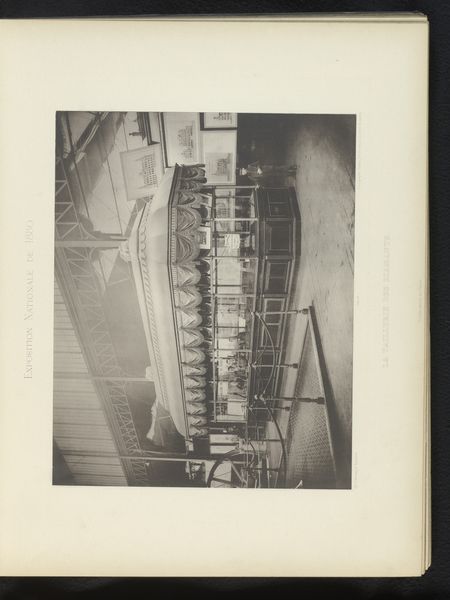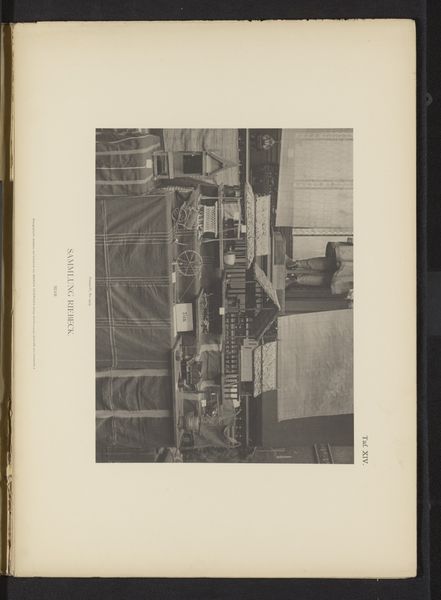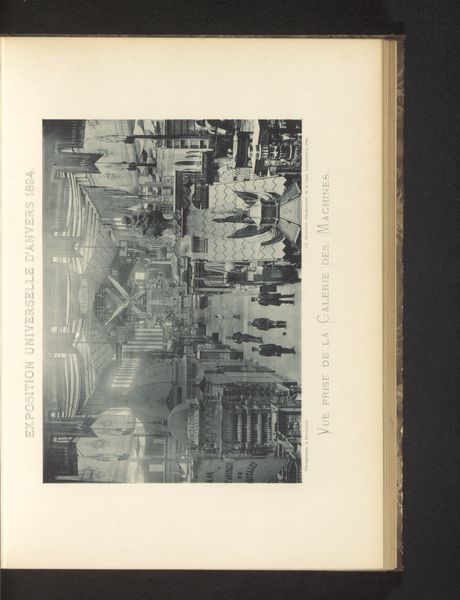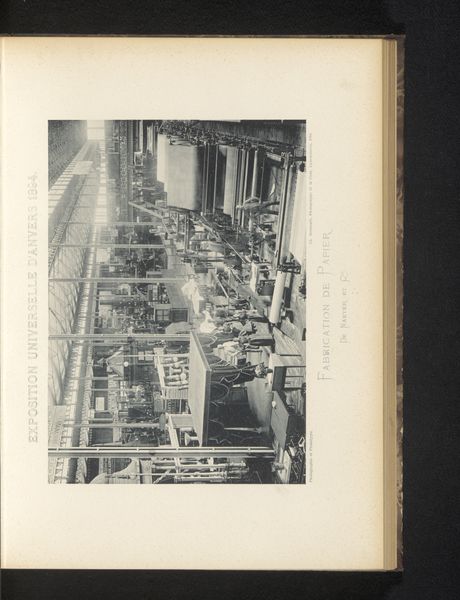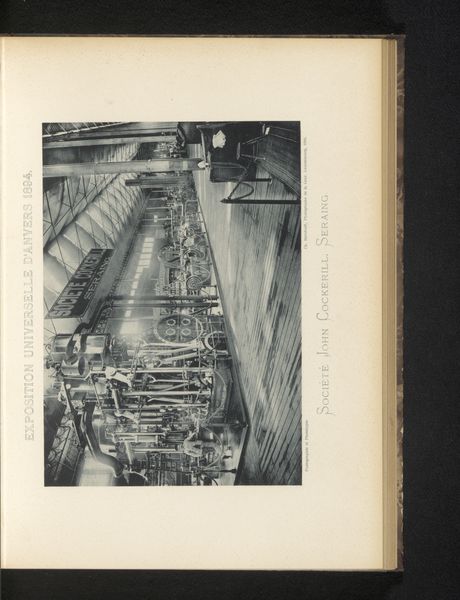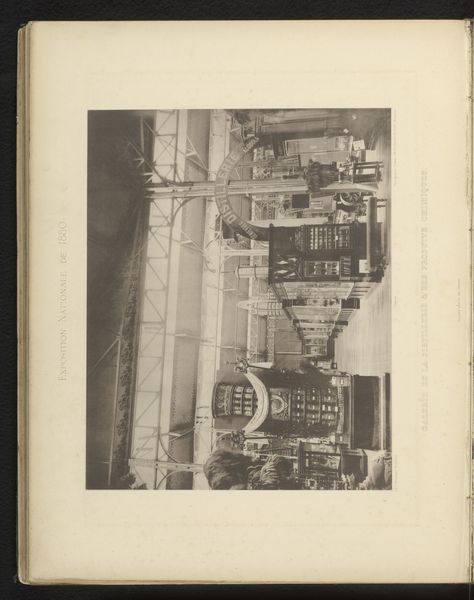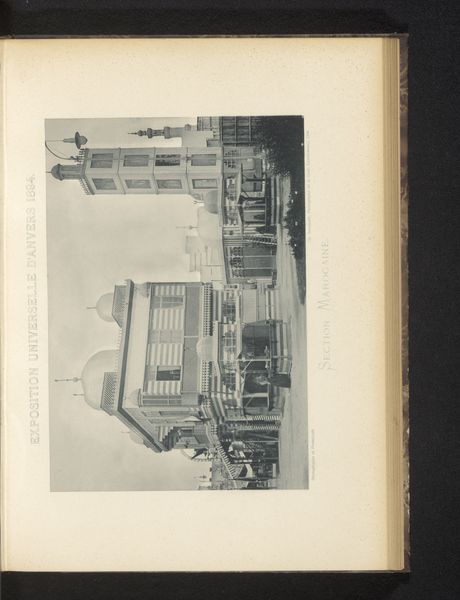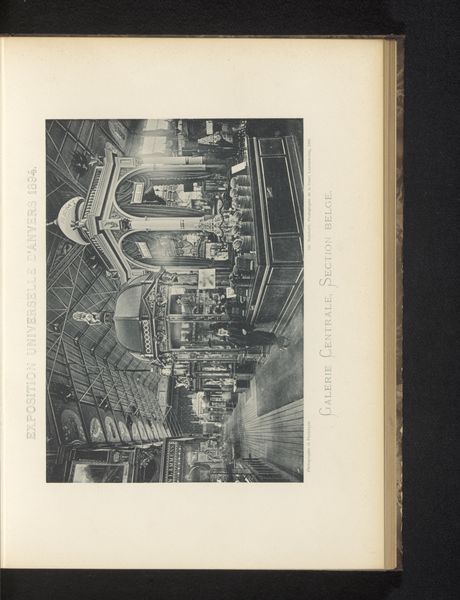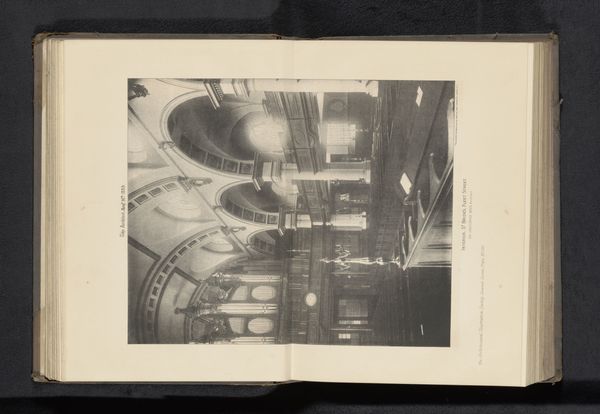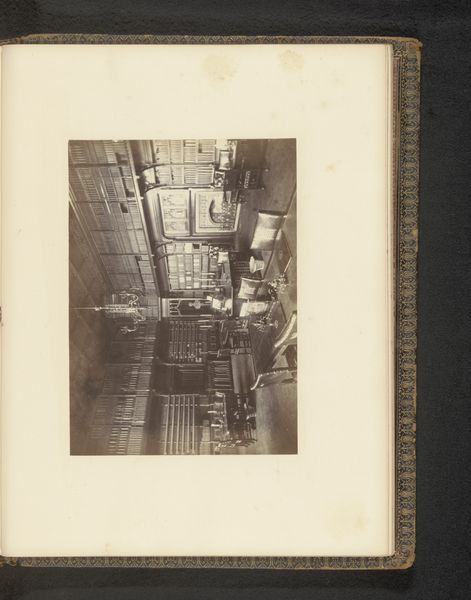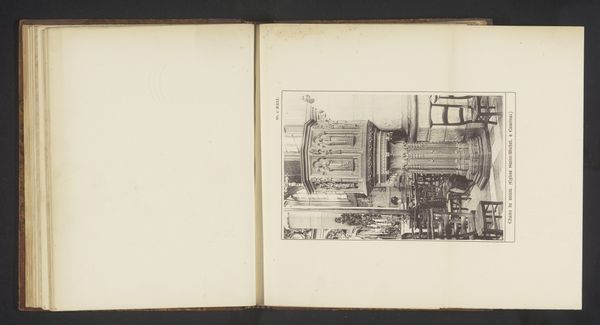
Gezicht op een opstelling van de Société Anonyme Électricté et Hydraulique uit Charleroi op de Wereldtentoonstelling van Antwerpen in 1894 1894
0:00
0:00
print, photography
#
still-life-photography
# print
#
photography
Dimensions: height 153 mm, width 216 mm
Copyright: Rijks Museum: Open Domain
Curator: This is Charles Bernhoeft’s “View of an exhibition by the Société Anonyme Électricité et Hydraulique of Charleroi at the Antwerp World’s Fair in 1894.” It's a print, capturing a very particular moment of industrial presentation. Editor: My first impression? An eerie optimism. It’s like a futuristic vision dipped in sepia tones, a hopeful blueprint now clouded with the past. There’s something about the precise lines of the machinery contrasted with the soft, almost dreamlike quality of the print that strikes me. Curator: The photograph documents the exhibit of a company specializing in electricity and hydraulics during a time of unprecedented technological advancement, right? What I find fascinating is the framing. It's a manufactured reality meant to evoke confidence in progress. But it's also deeply gendered. These technologies reinforced power structures dominated by men while also making possible certain types of reproductive freedom and changing forms of labour for women. Editor: Right, these types of exhibitions weren’t just about showcasing machines; they were about shaping societal visions of progress and the future—a curated dream. And that’s the kicker for me. This isn't a simple snapshot; it's a carefully composed still life that whispers of ambition, but now carries an almost melancholic weight. It speaks volumes about where we thought we were going, and where we actually ended up. It all seems terribly naïve now, doesn't it? Curator: Definitely. And those rows of identical lightbulbs lining the roof--an impressive display of electricity--but today, seen through a lens of climate anxiety, they give one pause to wonder if that innovation really did lead to a brighter future. Were we truly free? Or trapped on the road to extractivist dystopia? Editor: I see the industrial revolution’s signature hubris. Still, in a time obsessed with instantaneous everything, I find myself longing for the material, tangible hope embodied by those carefully constructed machines. I also feel comforted by the texture of this artwork, as if I could touch time and progress simultaneously. Curator: Maybe the best lesson of the still life here is for us to think more creatively about technology: not simply as something ‘good’ or ‘bad’ but about the concrete historical effects that it unleashes in our societies. Editor: Beautifully put. Bernhoeft’s photograph isn’t just a document of a past exhibition, it’s an invitation to examine our relationship with progress, power, and the stories we tell ourselves about the future, and maybe rewrite them.
Comments
No comments
Be the first to comment and join the conversation on the ultimate creative platform.
